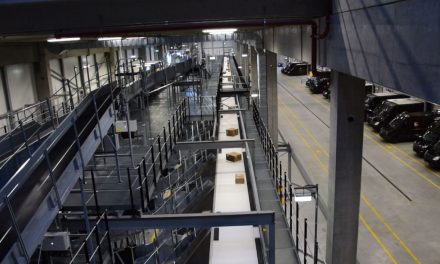
Drop-boxes how do they stack up now?
The increasing number of solutions to unattended home deliveries share several common themes, but it's far from clear yet which way the market will go
February's launch of new drop-box solutions from Darchem and Something4.com (opposite page) marks significant expansion of an increasingly crowded market.
Already these newcomers have to vie with other box-based systems, including the BearBox, the Dynamid and the Homeport; and more such systems are waiting in the wings, including the Storedrop system (News, November) and a forthcoming offering from newcomer Inboxout.
Similar systems have already been rolled out in other countries, including those of American producers Atlantes, Brivo and zBox, and more are in the offing.
Yet even as solutions proliferate, February also saw some consolidation in the UK market as Dynamid joined forces with another newcomer, ByBox. Stuart Miller, now joint chief executive of the combined business (alongside Dynamid's Dan Turner), argues: "The market is not quite ready for the home-box."
Rivals, of course, might challenge that view. At all events, Miller's own answer is a variation on the box theme essentially banks of secure, lockable boxes installed at public places such as railway stations, shopping malls or office blocks. Consumers would use them on a one-off basis for having direct-delivery goods dropped off.
Others have had a similar idea, including Pickupworks, which recently acquired Dropzone1, the fledgling drop-off service operator (News, November), and Home Delivery Access.
In theory, there seems little reason why the e-tailing market should not be attracted to the idea of these various box systems, and some e-tailers are certainly trying them. Sainsbury's is running a limited trial with Homeport, the company offering free-standing boxes that plug into a microchip-controlled anchor point on the wall, and several more supermarkets are experimenting with other systems on a less formal basis.
Certainly, in repeat sales operations in fields such as groceries, e-tailers could take the view that participation in a box-based scheme, or even subsidy of the box, might pay off in the long run especially if linked, say, to a year's loyalty commitment on the part of the end user.
However, for infrequent or ad hoc purchases the economic argument is more tenuous. One problem is that e-tailers' arrangements with third-party carriers tend to shield them from the direct impact of failed deliveries, and leave them free to duck the problem. This is why several of the box system manufacturers are looking elsewhere for their payback. Some, such as BearBox and Deleport, are targeting consumers themselves, although the outlay (usually at least £200 for a box) means it is no snap purchasing decision for the buyer.
An alternative approach is for the developers to take their sales proposition direct to the carriers, who clearly stand to make the greatest gains from avoiding return visits when consumers are not at home. But there is a difficulty here, as ByBox's Stuart Miller points out. "Carriers stand to make savings," he says, "but you can't necessarily expect them to pay."
He says their willingness to participate depends on the business model, and believes his locker-based system is sounder in the short term. A relatively small installed base of locker banks could serve a fairly large number of consumers, whereas each individual drop-box helps just one household.
An different concept involving much less initial outlay is a simple access system, using the same electronics seen in several of the box systems, but simply controlling the lock on a garage or outhouse. Several of the box system manufacturers are offering this as an alternative to the full product, and it is one of the main offerings of Home Delivery Access.
Paradoxically, at the other extreme, this same company is also behind the first cabinet built into a new UK house (News, page 8). Interest in this looks promising, although inevitably it must be a long haul before large numbers of houses can be so equipped.
All these systems of course face a challenge from companies operating drop-off services. Collectpoint seems to have edged into the lead here, claiming at least 2,000 drop points at the last count, but Dropzone1, m-box and Urbandrop are also putting up a convincing show, and have now been joined by new contender e-zpoint. Most are using convenience stores, although Dropzone1 also uses filling station forecourts, and the Post Office is hoping to extend trials of a similar system at its own counters later this year.
Sceptics question whether the drop-off point operators would actually have the capacity to handle much growth if the idea really took off. Arguably a more telling question is whether consumers will consider that delivery to a drop-off point really fulfils the promise of true home delivery. The jury is out on that one.
Part of the problem for the box-system and access-system developers is the basic difficulty of promoting their products to end users in an affordable way. Clearly consumers won't elect to use products they don't even know about.
So should the e-tailers (the ones actually initiating all this home delivery activity) take more responsibility for making delivery easier? Perhaps, but so far few seem to be doing much to raise awareness of the solutions available. Trials such as those by Sainsbury's are promising, and contenders such as eleTrunk and Storedrop clearly believe this approach can be taken much further; but there's plainly still a long way to go.












